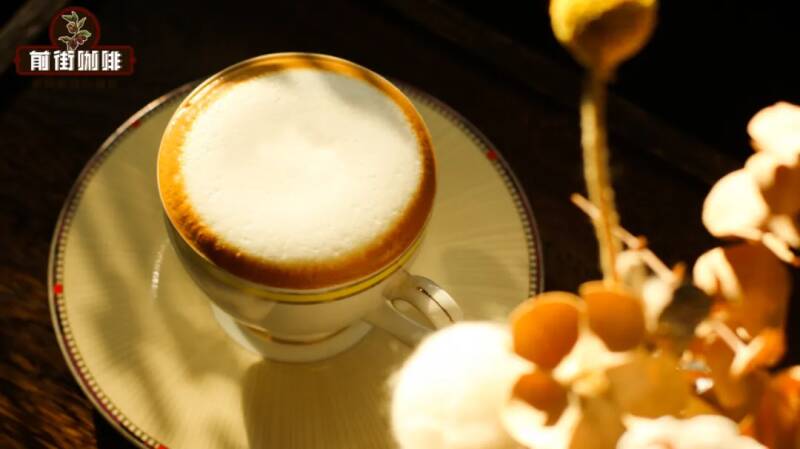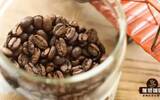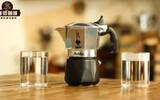Why can't cappuccinos be made takeout? What is the ratio of coffee to milk in a cappuccino? How thick is the milk foam in capuccino? What does Capuccino mean?
I don't know if my friends still remember, Qianjie shared a tweet about "Why Can't Dirty Take Out?" Then some friends left a message backstage saying that they found that many coffee shops 'cappuccinos do not make takeout, only have two options: in-house food and packed food.
Because Dirty needs to keep milk and concentrate layered while creating a temperature contrast, it is understandable that he cannot make takeout. But why can't a cappuccino, which combines milk and coffee directly like lattes, be taken out? And the same type of latte and Australian white can be used... This couldn't help but make many friends question. In fact, it's easy to understand! Although cappuccino, like latte and Australian white, are Italian coffees with only milk foam added, they are different in terms of taste and characteristics! Therefore, the main reason why cappuccino cannot take into account takeout production is because it has characteristics that takeout cannot be retained. Latte focuses on balancing the taste of coffee and milk. In order not to make the taste of coffee too prominent, a large amount of milk needs to be added to balance the taste of coffee. Take Qianjie as an example. The parameters used when making hot lattes on Qianjie are generally 40ml of espresso (20g powder, 1:2 ratio, 30 seconds) and 200ml of hot milk. Then, in order to make the taste softer and pull it, when heating the milk, it is also necessary to whip out a milk foam with high mobility and moderate thickness.
Australian White's focus is to make the coffee taste strong but not bitter. For this reason, it will not use as much milk as latte. In addition, we reduce the amount of liquid extracted when making concentrates, so that we can avoid the bitterness of coffee and make the coffee strong but not bitter. Take Qianjie as an example. The parameters used by Qianjie when making Australian white are generally 30 - 35ml of espresso (20g powder, 1: 1.5 - 1.8, 30 seconds) and 160ml of milk. Then, in order to make the coffee have a smoother taste, when heating the Australian white milk, we will send out a delicate milk foam with high liquidity to enhance the texture of the Australian white.
Cappuccino focuses on highlighting the taste of coffee, so less milk is used to make cappuccino. Take Qianjie as an example. The parameters used by Qianjie when making cappuccino are generally 40ml of espresso (20g powder, 1:2 ratio, 30 seconds), followed by 140 - 150ml of milk. Because there is less milk, the taste of coffee will be very prominent. For friends who have just come into contact with coffee, this taste is difficult to accept. In addition, cappuccino also has a very iconic feature, which is that it must have a thick layer of milk foam. Why? Because it needs the dense and mellow taste brought by this layer of milk foam! To this end, when we send milk, we need to take a lot of air intake to generate a large number of bubbles, thus forming a thick milk foam.

Even after the cappuccino was transformed into an ice drink, its trademark thick milk foam was still preserved. That is enough to see that the existence of this thick milk foam is crucial to cappuccino. If this bubble was missing, the cappuccino might not be called a cappuccino.
Based on the above brief introduction of Qianjie, everyone can know the main differences between cappuccino, Australian white and latte. In addition to the taste, there is also the difference in the milk foam. The reason why cappuccino is not made for takeout is precisely because of its trademark thick milk foam. Qianjie mentioned earlier that the essence of milk bubbles is bubbles! The liquid film enclosing the gas becomes thinner and thinner due to the gradual loss of the liquid. When it reaches a certain extent, the bubbles will break. Therefore, the milk foam will gradually dissipate over time. (There is a difference of twenty minutes)
There will be a period of delivery time for takeout from the store to the customer. Although this period of time will not be too long, it is enough to make more than half of the milk foam in the cup disappear. In addition, in order to allow customers to get a cup of warm coffee, many coffee shops will specially heat the milk to a higher temperature than the milk produced by ordinary in-house meals when serving milk. Excessive temperatures will make the milk foam dissipate faster. The reduction in milk foam will make the amount in the cup seem smaller, which is a very easy phenomenon to misunderstand and then lead to disputes for guests who don't know much about coffee. So in order to reduce disputes, many coffee shops simply choose not to produce takeout cappuccinos, so that there won't be too many disputes.
- END -
Important Notice :
前街咖啡 FrontStreet Coffee has moved to new addredd:
FrontStreet Coffee Address: 315,Donghua East Road,GuangZhou
Tel:020 38364473
- Prev

How to make silky and strong salty mocha coffee? How to make a delicious mocha latte? What is the difference between latte and mocha coffee?
Traditional mocha coffee is made from espresso and hot milk as the basis and then adding it to chocolate products. It is very simple. The addition of chocolate not only neutralizes the bitterness of coffee, but also adds a rich sense of layers to the coffee. Thanks to this, Mocha Coffee was very popular among consumers when it was launched.
- Next

Why does mocha pot coffee smell burnt? How to adjust the coffee extract in the mocha pot? What should I do if the coffee in the mocha pot is burnt? Why is mocha pot coffee so easy to overpower?
Qianjie found that many of my friends were troubled by the problem that mocha pot coffee was often overcooked. Because Qian Jie often shares tweets related to mocha pots, some friends leave messages in the comment area such as: "How to avoid over-extracting mocha pot coffee" or "What's wrong with the extracted coffee being too bitter?" Indeed, compared to its
Related
- Being chased out of the rain in front of Starbucks?! Store: Sheltering from rain under umbrellas poses a safety hazard
- The white moonlight has changed?! Lucky launches "Big Winter Pear American"
- Hand-brewed coffee three-stage method, high-sweet and universal brewing method to share! What does the high sweet water level of hand-brewed coffee mean?
- What is the difference between raw, refined and full espresso coffee? How to extract espresso and taste good?
- A complete list of coffee bean names and their meanings! What is Yejia Shefi coffee? Where is Mantelin coffee?
- What grade does Arida Manor Kaduai coffee beans belong to? What treatment is Arida ASD slow anaerobic sun exposure?
- The milk tea cup becomes smaller?! Overlord Tea Girl launches a new "Return to Yunnan" series
- Accused of selling counterfeit and high-priced coffee beans! Well-known boutique coffee brand "Oukelao" bowed and apologized!
- How to make espresso dumplings? Can I eat coffee and glutinous rice balls together?
- Save the unformed and stagnant powder cakes in one second! What is the problem with stagnant water in the powder bowl of the espresso machine?

